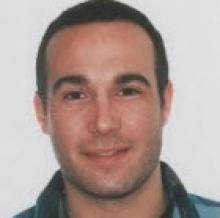
Acoustic Vector Sensors (AVSs) have become a powerful tool to characterize sound fields since the Microflown was invented in 1995. They have been successfully used in many applications in applied acoustics, as near-field acoustic holography, virtual phased arrays, sound field visualization, noise control, acoustic absorption and impedance measurements, end-of-line control, sound source characterization, detection, separation and localization, to name some but a few.
The AVS intrinsically measures the spatial gradient of the acoustic pressure field (i.e. the particle velocity vector). Therefore, it allows us to get directional information of the sound field, which can be used for sound source localization and tracking within a distributed network of sensors.
Most of the acoustic sources of interest in situational awareness applications have strong tonal or harmonic components within their acoustic signature, as Unmanned Aerial Vehicles (UAVs), propeller planes, helicopters, etc. Therefore, the main goal of the work within the scope of this PhD is to develop techniques that combine all the available information and take advantage of the properties of the AVSs.
From the signal processing point of view, a possible classification of the techniques, algorithms and methods to be investigated and developed is the following:
- Sound source detection (in the neighbourhood of the AVSs).
- Acoustic source separation.
- Local acoustic source classification.
- Direction Of Arrival (DOA) estimation using Acoustic Vector Sensors
- Acoustic source Localization and tracking using a distributed network of AVSs:
- Distribuited acoustic source classification.
- Map matching.
All these problems and some of the potential solutions will be briefly described in order to bring a clear understanding of the investigation and the main challenges involved.
David Pérez Cabo received the bachelor degree in Telecommunication Engineering in 2009 and the M.Sc. degree in Communication in 2012 from the University of Vigo. He worked as a researcher at the university of Vigo developing tools for acoustic noise control and noise prediction in 2011-2012. He has been working as a researcher at Microflown AVISA ever since, developing algorithms for enemy fire detection and localization using distributed networks of sensors. He received the second M.Sc. degree in Signal Theory and Communications in 2014. He is currently working on his PhD in the topic of “Tonal and Harmonic Acoustic Source Localization and Tracking” at the University of Vigo in cooperation with Microlfown AVISA.




